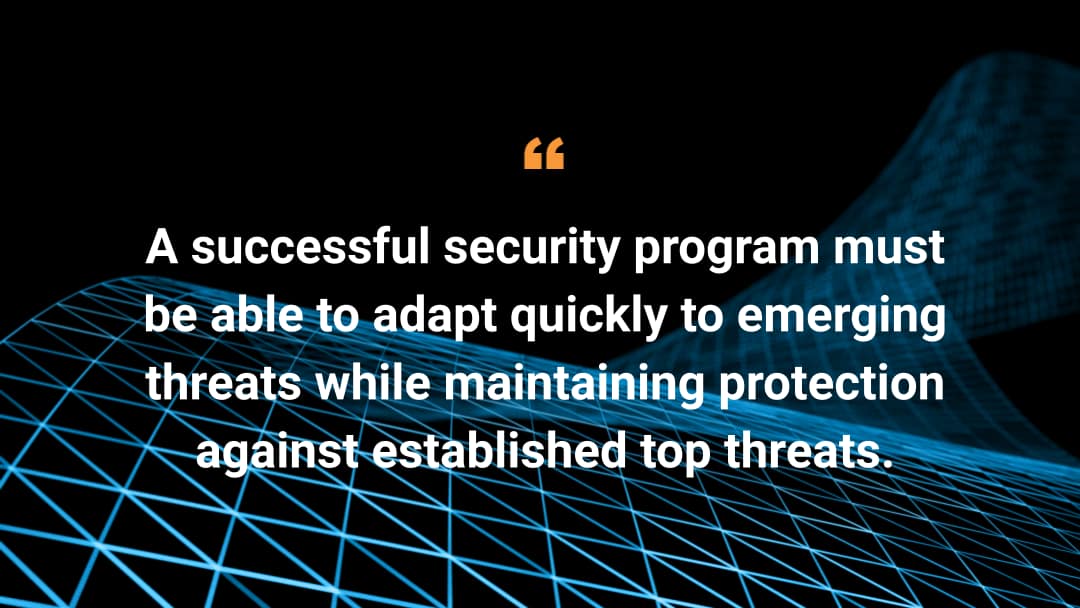Is Your Security Strategy Focused?

Global organization leaders across business lines know that the changing threat landscape is a principal concern today, and will continue to be so in the future. However, because emerging threats steal all the headlines, many leaders are no longer giving the established threats the attention they need.
A successful security program must be able to adapt quickly to emerging threats while maintaining protection against established top threats. This can cause conflict between funding for new initiatives and funding for incremental improvements against common threat vectors, such as ransomware, phishing, and account takeover.
Asking the right security question
By chasing only the next emerging threat, security teams will not be able to stay on top of the current threats that continue to evolve in strength — including ransomware, phishing, and account abuse. This sets companies up for dangerous attacks that could have been avoided.
There will always be a new attack type. But rather than being distracted by future threats, strategic leaders should shift their focus from “Are we safe?” to “Are we protected?”
Cybersecurity fatigue is a business risk
The tried-and-true threats continue to be winners for threat actors. According to Verizon’s “2022 Data Breach Investigations Report,” phishing, the use of stolen credentials, and ransomware were among the top five actions involved in breaches. All three types of attacks were already prevalent in 2018. This presents a problem for today’s security teams because presenting new statistics — even with a double-digit increase in terms of the impact — is often not enough to secure funding and executive support for the necessary security measures.
This problem can cause security teams to experience “alert fatigue” when contending with threats. Security leaders must expend enough energy to rally both IT and business executives around issues that they may have already addressed.
On the other hand, C-level executives, along with business line leaders, often experience “attack fatigue,” and continually ask such questions as, “Haven’t we already invested in those types of protections?” and “Shouldn’t we allocate additional investment in future threats instead?”
Security that bridges the gap
The Akamai security portfolio offers advanced, modern protections, backed by our powerful Adaptive Security Engine to thwart both today's and tomorrow's threats.
To successfully reduce security gaps and mitigate the biggest risks, enterprises need application and API security that is designed to intelligently analyze all threats (old and new), provide security analysts with valuable inputs for far easier decision-making, and reduce false positives in both attack detection and traffic noise.
Automated defenses allow security teams to better respond to threats across the enterprise without a human having to do that work, while also confirming that the security controls they do have operate with maximum efficiency and flexibility. Threat actors are automating, scaling, and commoditizing attacks every day — leveraging advanced automation in your current defenses will improve your ability to manage today’s and tomorrow’s cyberthreats at pace.
Learn more
To learn more about the Adaptive Security Engine, or to talk more about best practices for common, persistent threats, as well as what’s coming down the road, reach out to us.


